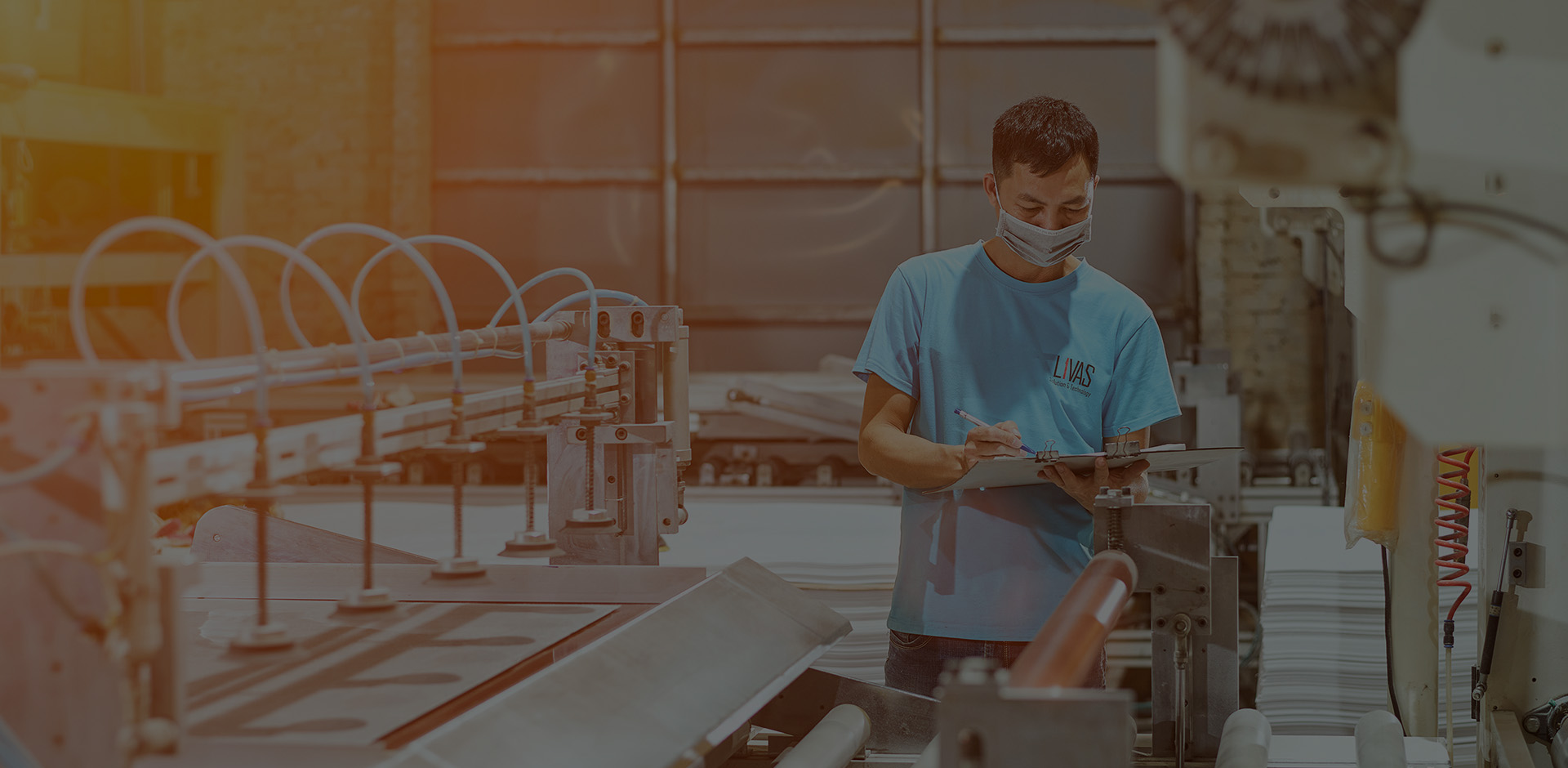The advancement of science and technology has given birth to many new industrial materials to replace the gradually depleted natural materials, among which we have engineered Acrylic wood. Acrylic is not only highly durable but also creates products with aesthetic value, elegance and modernity.
We may have seen or are using products made from Acrylic materials, but still may not know what exactly Acrylic is? What are the features that Acrylic so popular? In this article, Livas will help you better understand Acrylics, and have a clearer view of this material.
Structure of Acrylic material
An Acrylic sheet is made of a very special structure to ensure quality, durability and flexibility. Acrylic sheets are usually composed of at least 3 layers: core plastic layer, ABS layer and anti-scratch finish.
The inner core of the Acrylic sheet can be moisture-resistant green core MDF, MFC, HFC or Picomat plastic. The most commonly used core is moisture-resistant green core MDF imported from Malaysia.
Acrylic sheet is widely used thanks to its plastic properties with high temperature resistance and penetration, plus the glossy effect on the surface.
Features of Acrylic material
– Acrylic sheet may create a highlight, youthful, and modern look for your house’s interior space thanks to its high gloss properties. In addition, this material is extremely friendly to the environment and safe for consumers.
– Acrylic materials have plastic properties and thus can be shaped into various products.
– Acrylic sheet makes the product surface smooth, dust-free, easy to clean, thus saving time when cleaning.
– When the Acrylic surface is slightly scratched, it can be polished like new.
– Acrylic sheet has outstanding glossiness and is diverse in color with more than 50 different colors.
Process for manufacturing engineered Acrylic wood
A process for manufacturing engineered Acrylic wood includes the following steps:
Step 1: Selection of wood core
– The wood core will directly affect the quality of the Acrylic wood sheet.
– The wood core must have a flat and smooth surface, be of at least 3mm in thickness, and not to be deformed, …
– Commonly used types of wood cores are MDF, HDF, MFC, plastic wood, etc.
[image]
Step 2: Surface cleaning (Acrylic sheet + wood core)
– At this stage, the manufacturer uses a number of specialized chemicals to clean the wood core and the Acrylic workpiece. Just a small dust particle clinging to the surface of the Acrylic sheet or the wood core will also become a big mistake once the product has been pressed.
– To ensure aesthetics and avoid product defects, this surface cleaning process is specially cared for.
Step 3: Glue coating
– This is also a very important step and will be performed automatically by machines to ensure that the glue layer will be evenly covered all over the surface.
– Certain types of glue that have poor durability with Acrylic should not be used, such as dog glue, spray glue, etc.
Step 4: Acrylic sheet casting
– This stage is also performed by automatic machines in the order of: glue coating – heating – Acrylic sheet pressing.
– The pressure exerted during the pressing process is an extremely important factor. The pressure must be great enough to extrude all the air out, but not too great to avoid deformation of or break to the Acrylic sheet.
Application of Acrylic material
General applications in life
Featured with many outstanding properties over other materials such as glossiness, varied colors and patterns, light weight and long use life, etc. Acrylic sheets are more and more common in all fields of life. Wide applications of Acrylic can be mentioned such as:
– Acrylic sheets for production of publications, souvenirs, gifts, etc.
– Acrylic sheets for production of partitions, containers, wardrobes, etc.
– Company signs, advertising boards, etc.






